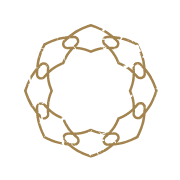Strength Assessment
Why We Start with an Assessment
At Uptown Movement, we begin every member’s journey with a one-on-one assessment. But what exactly is this assessment? It’s not about fitness levels, strength, or even movement quality. It’s really an opportunity for us to understand what your joints like and don’t like. This helps us recommend the classes that will benefit you the most and determine the best direction for your training.
During the assessment, we’ll put some load on your body. We’ll start by lifting a weight to see how it feels. If it feels good, we’ll add a little more. If that feels good, we’ll go heavier, continuing based on your comfort and how we see you moving. Surprisingly, many beginners end up lifting quite a bit, even on their first day. It’s not uncommon for someone to lift 100 lbs with relative ease.
For beginners, especially those with zero experience, there’s often a look of shock when they realize what they can do. I always ask the same question: “What experience in life do you have that says you could have done that?” The answer is almost always the same: “None.” Then I follow up: “What experience do you have that says you could not do that?” Again, the answer is usually “None.”
This is why it’s so important to approach training as an exploration—not just of movement and sensation, but of capacity.
How Training Works
Exercise acts as a stimulus that your body responds to in order to adapt. Whether you're lifting weights, stretching muscles, or learning a complex movement, your body adapts. With resistance training, it gets stronger. With stretching, it becomes more flexible. With complex movements, it improves coordination and expands its movement capacity.
However, these adaptations occur because of your body’s physiological response to the stimulus. For example, lifting heavy weights triggers the release of growth hormones that signal your bones and muscles to get stronger. Stretching sends signals through your nervous system, helping your body recognize and reorganize around new ranges of motion. Learning complex movements promotes neuroplasticity, encouraging your brain to adapt and figure out how to master the task.
In each case, the adaptation is driven by the body’s response to the stimulus, which makes understanding and applying the right kind of stimulus so important.
The Importance of Stimulus
For the body to adapt, the stimulus must be intense enough. Let’s say my body can handle 100 lbs for 10 repetitions, creating a total mechanical stress of 1,000 lbs for the set. But if I assume I can only handle 50 lbs for 10 reps, the total stress is just 500 lbs—well below my capacity. This lower stimulus won’t create the physiological response necessary for growth.
Similarly, if I stretch only to a point that feels comfortable, I’m not signaling to my muscles that they need to recognize new ranges of motion. I’m simply staying within what’s familiar. And if I practice the same movements for years without variation, I’m not challenging my brain’s neuroplasticity to adapt and grow.
Why We Promote Curiosity and Exploration
That’s why we start with an assessment and why we encourage exploration and curiosity in your training. We want to continually get a good sense of where your baseline is, ensuring that the time you devote to practice is as beneficial as possible.
In the early stages of training, all stimulus is new, so your body adapts quickly—this is what we call “beginner gains.” But soon, those gains will taper off, and we’ll need to work a bit harder to create the stimulus needed to keep progressing.
What Does This Mean in Practice?
This doesn’t mean you always have to push yourself hard. Movement has many benefits beyond building strength, like improving blood flow, cardiovascular health, and nervous system regulation. On days when you’re not feeling your best, you can modify your training to go lighter or less intense to match your body’s needs. But knowing what your maximum capacity is helps guide you. For instance, if you can lift 100 lbs easily, you might choose 50 lbs on an easy day instead of 10 lbs.
Use the days when you feel good to push the envelope and explore your capabilities. You’ll constantly redefine your baseline and maybe even set a new one. If you stay mindful of movement quality and listen to what your body tells you, this exploration isn’t as daunting as it sounds.
Final Thoughts
Remember, until you try, you have no experience telling you what you can’t do. So, keep exploring. Every time you train, you’re not just building strength—you’re discovering what your body is capable of.
